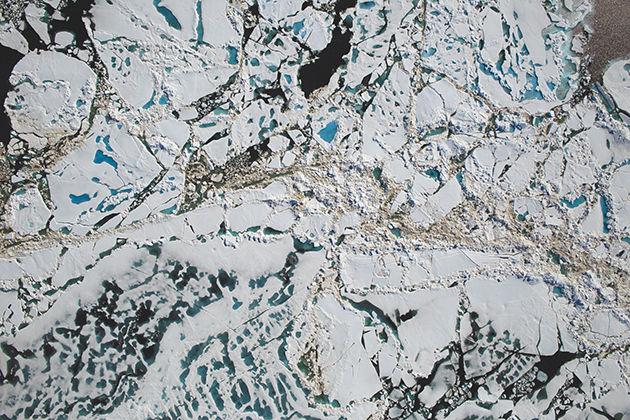For three years in a row now, NASA and the NOAA, the National Oceanic and Atmospheric Administration, have documented record-breaking surface temperatures on Earth.
The warming trend is an ongoing phenomenon according to Texas A&M atmospheric sciences professor Gerald North, but 2016 is a standout year.
“There is this trend, and that is what’s worrying us,” North said. “This year is especially weird because there was a big El Niño that has been going on for a year and a half or two. When we have an El Niño that year will jump above the trend.”
An El Niño occurs when the Pacific Ocean gets extremely warm and affects the average of the globe’s surface temperatures, North said.
“It is such a big area out there that it influences the average over the whole globe,” North said. “But in 2016 every major city in the United States went up in temperature. So even if you left out the El Niño, 2016 would probably still be the warmest year because of the trend.”
The cause of the warming trend, often referred to as global warming or climate change, is the emission of carbon dioxide through the burning of fossil fuels that creates green house gases, according to North.
“When we go finding carbon that was deposited under the surface of the earth, that’s excess carbon dioxide that we burn,” North said. “There is a natural system that takes CO2 out of the air and puts CO2 back into the air that’s constantly happening, but it sort of comes to equilibrium. We are simply putting it into the earth’s atmosphere faster than it can be taken down.”
The physics of greenhouse gases makes the warming trend clearer when differences in the sun’s visible light radiation and the earth’s infrared radiation is taken into consideration, said atmospheric sciences professor Renyi Zhang.
“There are very few molecules or materials in the atmosphere that absorb visible light,” Zhang said. “But in the earth’s atmosphere there are actually a lot of molecules that absorb infrared radiation. So that means these molecules actually trap radiation emitted by Earth and send Earth’s radiation back. This makes the greenhouse effect.”
John Nielson-Gammon is a Regents Professor at Texas A&M and has served as the Texas state climatologist since his appointment in 2000 by then-Governor George W. Bush.
“There’s a lot of things that affect climate, natural and man made, and it usually takes a combination of the two to set a record,” Nielson-Gammon said. “This El Niño was stronger than the last major El Niño in 1998. The El Niño ended in the spring, though. For that reason we won’t be setting a fourth record, but temperatures will still be warmer than a decade ago because of the warming trend.”
Solving the problem of global warming starts with individuals making personal choices that use less fossil fuel, but Neilsen-Gammon said world leaders must first address the problem for a solution to be possible.
“The biggest problem is it has become too politicized,” Neilsen-Gammon said. “This eliminates talks about what should be done.”
Improvement is something North believes will continue even though some politicians deny the warming trend.
“The state of Texas for example spent a lot of money under Rick Perry, our new energy cabinet secretary,” North said. “When no one was looking he spent a lot of money, taxpayer money, to put the wires out to where those windmills are. So, it’s one reason I’m not too scared with him becoming energy secretary. He believes this. All of these people in Congress who call it a hoax and shout and scream they believe this.”
Climate change an ongoing phenomenon, A&M experts say
January 23, 2017
Photo by Provided via NASA
Chunks of sea ice, melt ponds and open water in the Chukchi Sea in July 2016.
0
Donate to The Battalion
Your donation will support the student journalists of Texas A&M University - College Station. Your contribution will allow us to purchase equipment and cover our annual website hosting costs.
More to Discover








